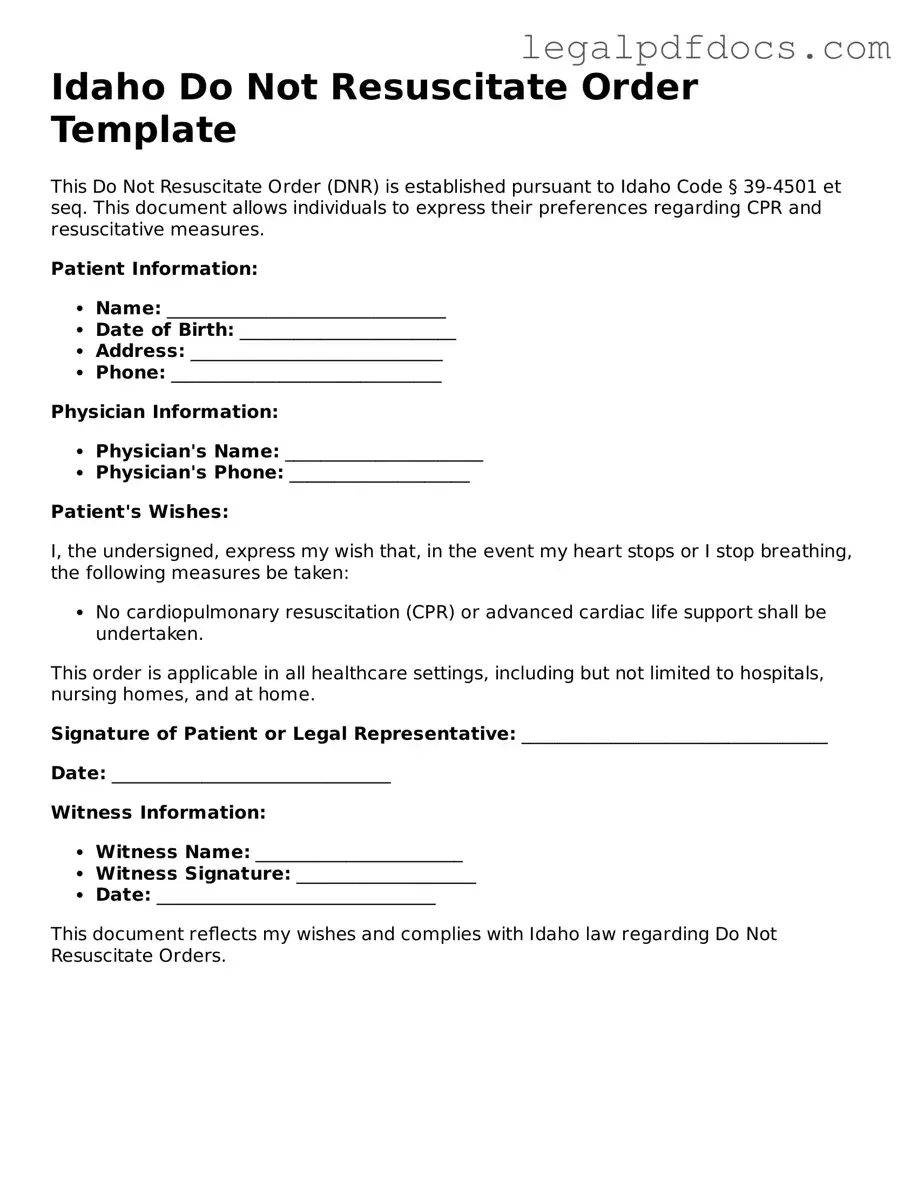Official Do Not Resuscitate Order Form for Idaho
A Do Not Resuscitate Order (DNR) form in Idaho allows individuals to express their wishes regarding resuscitation efforts in the event of a medical emergency. This document ensures that healthcare providers respect a person's desire to forgo life-saving measures. Understanding and completing this form is crucial for those who wish to make their preferences known.
To take control of your medical decisions, consider filling out the DNR form by clicking the button below.
Open Do Not Resuscitate Order Editor Here
